A beautiful blend of function and artistry, watch dials are one of the most important components in horology. As the part of a watch most frequently viewed, it must fulfil its primary function of displaying the time clearly while also serving as a canvas for a brand to express its identity and creative finesse. At Rolex, dial making is a meticulous process involving over 500 dedicated individuals, all striving to transform the simple act of reading the time into an enjoyable experience.
What appears to be a simple coloured disc is actually the result of much forethought and planning. “It is important to fully understand concepts such as the depth of a colour, surface texture, the regularity of a decoration – for example, the striations of a sunray finish,” explains David Riboli, head of Rolex’s watch prototype department. “But that is not the whole story. You also need to consider the environment in which the dial will be set: the colour of the case and strap, the style of the bezel and the depth at which the dial is set into the case.”
And the configurations are nearly endless. Metal dials can be lacquered for opacity, or electroplated or given a Physical Vapour Deposition (PVD) treatment for a metallic sheen. Some dials rely on ancient techniques like grand feu enamelling for intense hues that do not fade over time. Others are cut from natural materials like mother-of-pearl, eisenkiesel, turquoise and meteorite, with their patterns making each dial unique. The appliques can be Roman or Arabic numerals, geometric shapes, filled with luminescent material, or set with diamonds. But every step, from the initial sketch to the finished prototype, is done in-house to maintain the highest standards of quality.
Indeed, it takes at least 60 operations to turn one metal disc into a finished dial. While high-tech machinery does most of the heavy lifting, Rolex’s most important tool in this process is arguably the human eye. The Oyster Perpetual Sky-Dweller, for instance, requires two dials in its complex construction. These are separately produced and thus must be visually matched by a certified colorimetrist to ensure both are the exact same shade. There exist instruments that do this, but Rolex believes there is no substitute for the well-trained eye. This is why, for example, all the sunrayfinish dials are checked one by one to ensure that the striations are uniform and regular. The beauty of a dial is what makes it so captivating. This is why it has to be crafted to perfection.
The brand’s drive for horological innovation extends to its dials as well. While its dials were traditionally made with small feet that are screwed onto the movement, many now feature a bell or “skirt” shape that can be clipped very precisely onto the movement thanks to a thin vertical lip — no longer than millimetre — around the circumference of the back. In fact, Rolex has filed dozens of patents in the field, for example, with respect to surface treatments, the manufacture of appliques or the morphology of the dial base plate.
The creation of a dial is a unique form of alchemy and is the coming together of traditional craftsmanship and cutting-edge technology. What starts out as a bare metal canvas will gather rich embellishments promising a watch a distinctive personality. With the capacity to design and engineer this iconic component entirely in-house, Rolex is a master of the craft.







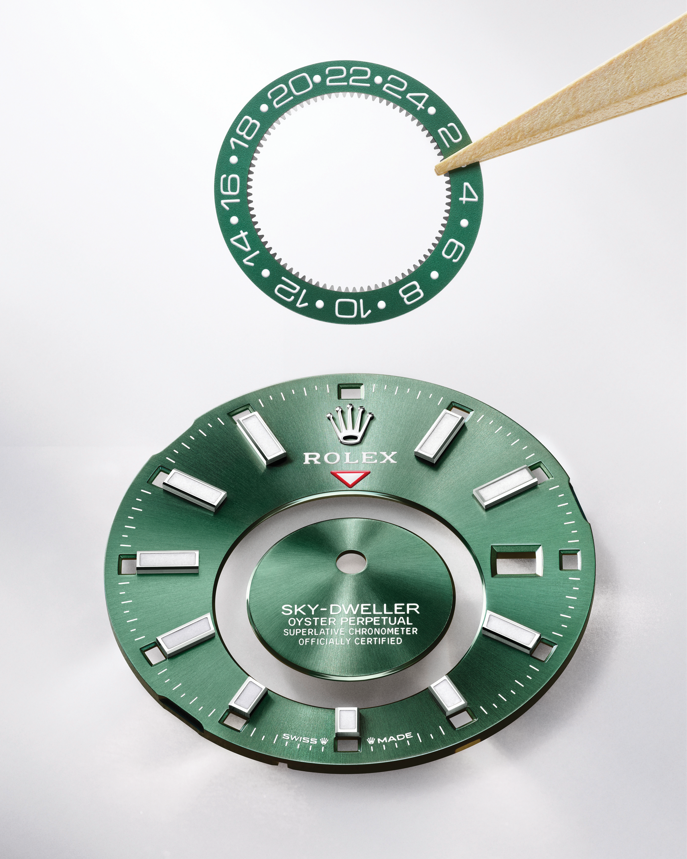 MINT GREEN DIAL WITH 24-HOUR DISC (OYSTER PERPETUAL SKY-DWELLER)
MINT GREEN DIAL WITH 24-HOUR DISC (OYSTER PERPETUAL SKY-DWELLER)
.jpg) ROLEX DIALS THAT CAN BE MADE FROM NATURAL MATERIALS, INCLUDING GREEN AVENTURINE, MOTHER-OF-PEARL, OR DIAMOND PAVED (OYSTER PERPETUAL DAY-DATE 36)
ROLEX DIALS THAT CAN BE MADE FROM NATURAL MATERIALS, INCLUDING GREEN AVENTURINE, MOTHER-OF-PEARL, OR DIAMOND PAVED (OYSTER PERPETUAL DAY-DATE 36)
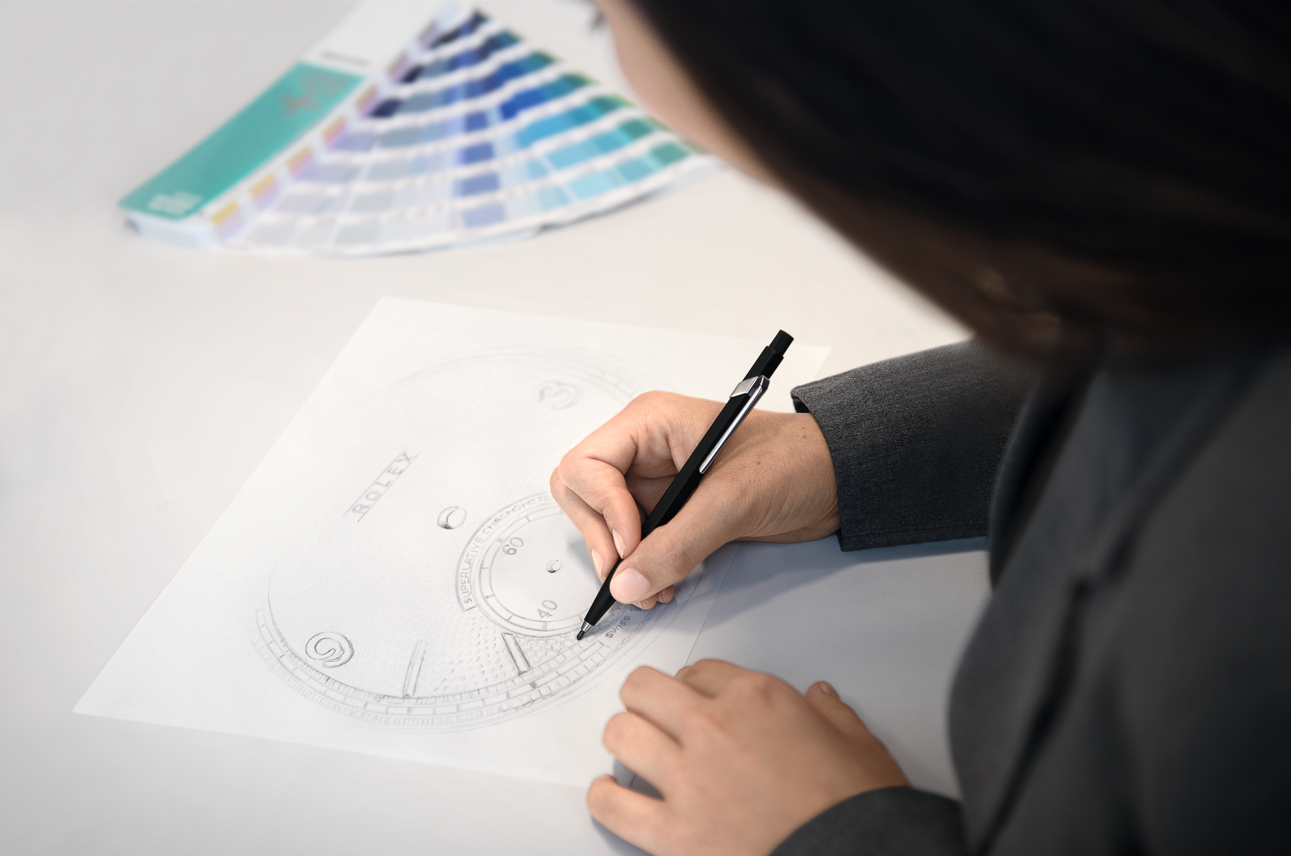 SKETCHING THE DIAL OF THE PERPETUAL 1908 IN 950 PLATINUM
SKETCHING THE DIAL OF THE PERPETUAL 1908 IN 950 PLATINUM
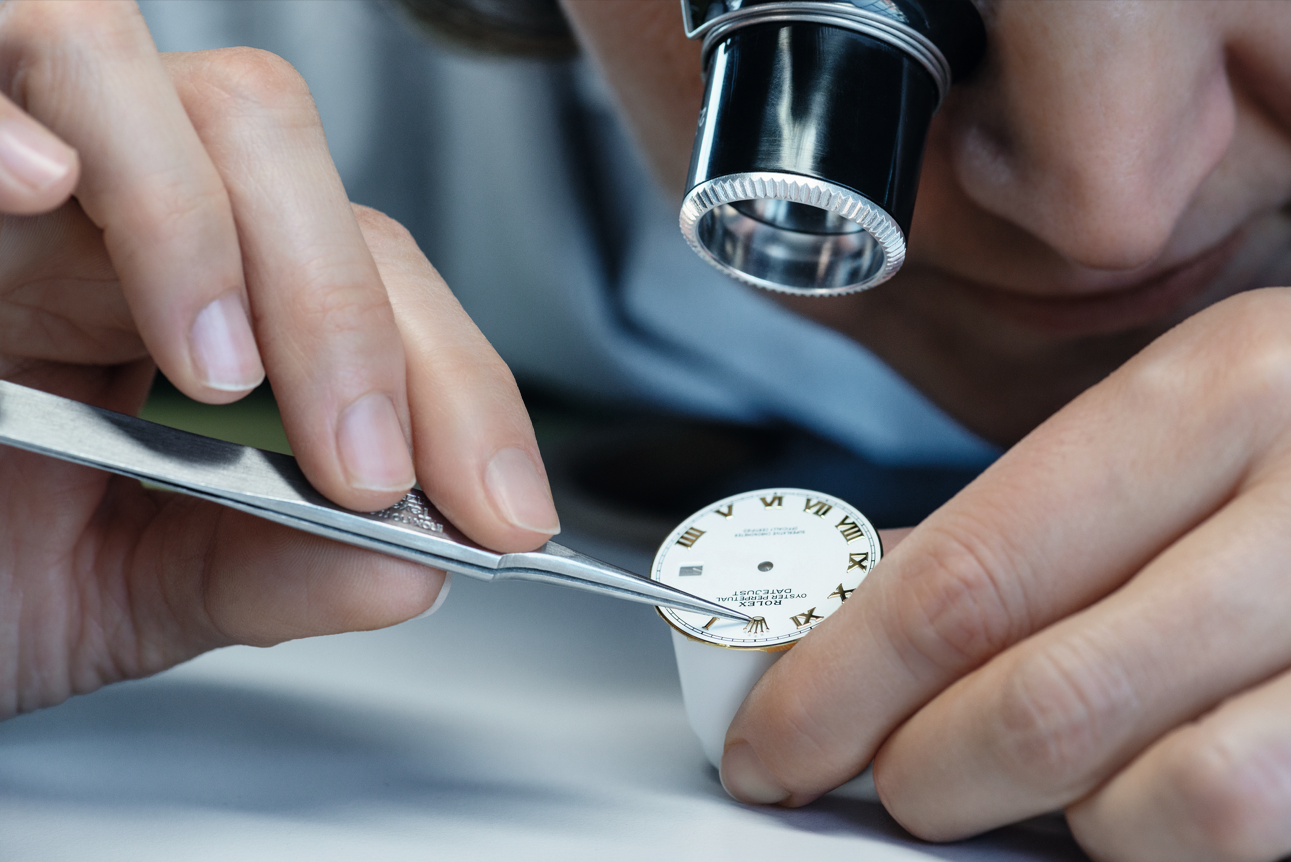 FITTING THE ROLEX CROWN APPLIQUE ON A DIAL BY HAND
FITTING THE ROLEX CROWN APPLIQUE ON A DIAL BY HAND
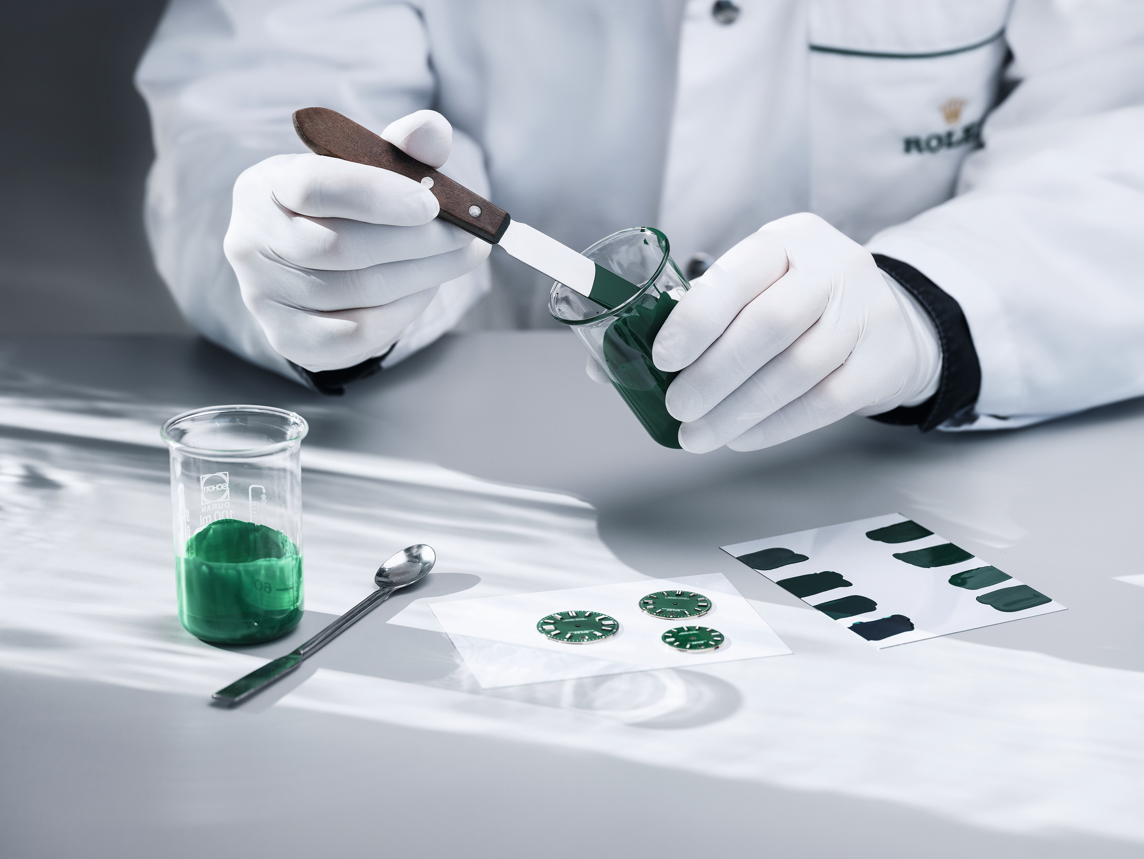 TESTING FOR THE RIGHT SHADE OF LACQUER ACCORDING TO THE SKETCHES CREATED BY THE DESIGN DEPARTMENT
TESTING FOR THE RIGHT SHADE OF LACQUER ACCORDING TO THE SKETCHES CREATED BY THE DESIGN DEPARTMENT


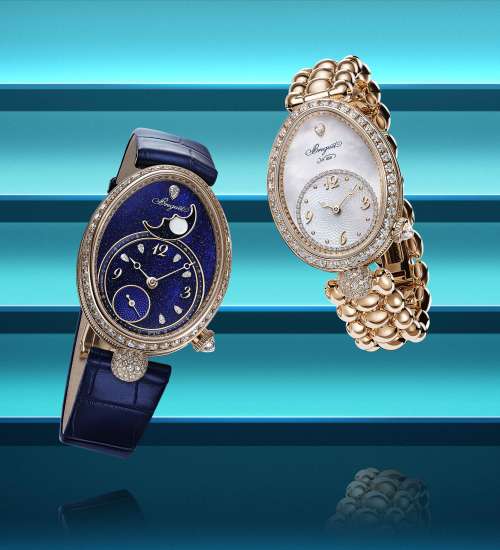

 Back
Back
